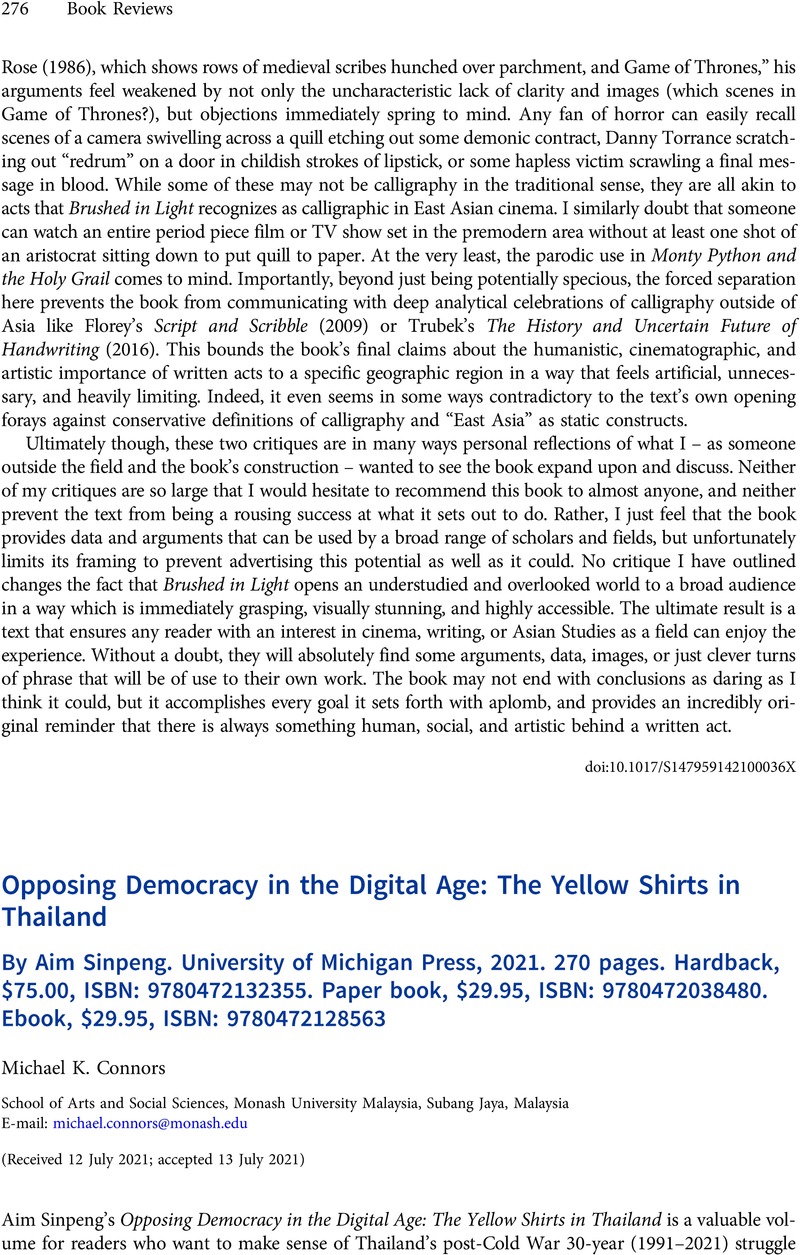Crossref Citations
This article has been cited by the following publications. This list is generated based on data provided by Crossref.
Connors, Michael K.
2023.
Opposing Democracy in the Digital Age: The Yellow Shirts in Thailand By Aim Sinpeng. University of Michigan Press, 2021. 270 pages. Hardback, $75.00, ISBN: 9780472132355. Paper book, $29.95, ISBN: 9780472038480. Ebook, $29.95, ISBN: 9780472128563 — Corrigendum.
International Journal of Asian Studies,
Vol. 20,
Issue. 2,
p.
981.




